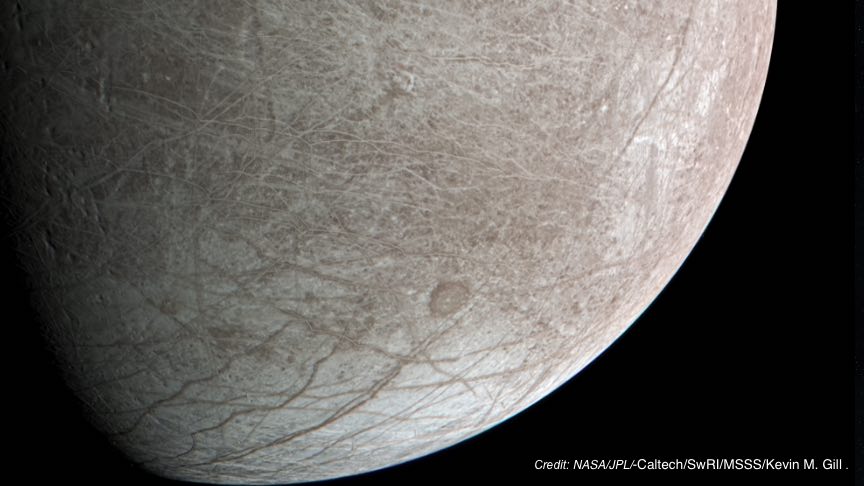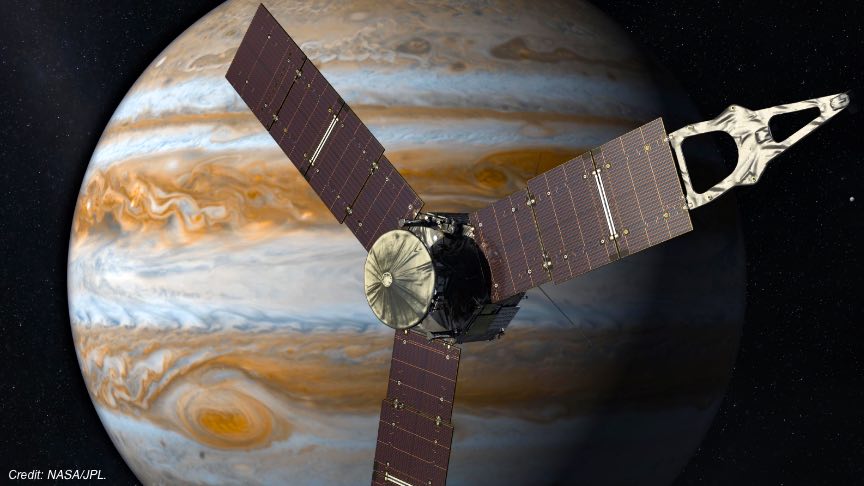Finally in September, however, the spacecraft's mission will come to an end, with the probe eventually falling into Jupiter's atmosphere as its orbit decays. By the time it dies in the swirling vapors of Jupiter, Juno will have seen nearly double its originally intended lifespan.
Leaving Earth Behind
Built by Lockheed Martin, the Juno spacecraft was launched from Cape Canaveral on August 5, 2011 and began a 5-year transit across the solar system to the big planet. The long trip would cover an incredible 1.74 billion miles while hitting speeds of nearly 130,000 miles per hour. Juno arrive at Jupiter in 2016, entering an elliptical, polar orbit of the big planet on July 5.
Original mission plans called for the spacecraft to complete 37 orbits of Jupiter, but the craft was only able to complete 12 orbits before the mission plan ran out of budget in July 2018. The mission was extended immediately that year, then extended again in 2021. That extension is due to run out in September 2025.
The extended missions, however, have allowed the spacecraft to make detailed observations not just of Jupiter itself, but of the very intriguing moons of Jupiter including Io, Ganymede, and Europa, a frozen world long imagined to have liquid water encapsulated under a thick crust of ice where many, following in the footsteps of science fiction author Arthur C. Clarke, hope and imagine some form of life may exist.
Juno's Major Discoveries at Jupiter
As NASA notes on its website devoted to the mission, "before Juno arrived, the largest planet in our solar system still had vast areas unexplored, unknown, even unseen."
Juno's discoveries include:
- The first clear, closeup pictures of Jupiter's North Pole, "a strange, bluish region full of Giant storms and strange weather," NASA says.
- Finding a "central cyclone at the north pole is surrounded by eight more" stretching more than 2,500 miles across.
- Discovering that Jupiter's magnetic filed is much strong than thought, as much as 30 times more powerful than Earths.
- Finding that the famous Great Red Spot, the giant storm that has been circling the planet perhaps for centuries. Is slowing shrinking, and that "its roots run 200 miles (320 kilometers) deep — 50 to 100 times as deep as Earth’s ocean."
Incredible Photos of Jupiter and Its Moons
Astronomers and other scientists look at the scientific data that Juno and other probes collect. But in Juno's case, the images it has taken of the Jovian system are perhaps just as important, considering the details they reveal and the beauty they display.
While Juno is near end of life, as its mission comes to an end a new spacecraft is already on its way to Jupiter.

The Europa Clipper was boosted into space on top of a SpaceX Falcon Heavy Rocket in October, 2024. It is on its way back to Earth to get a gravity assist and gain speed for its final departure to Europa where it will take observations and gather data for four years after its arrival in 2030 before being crashed, likely on Ganymede, to prevent any possible contamination of the Jovian system with microbes from Earth.
The Clipper is the largest spacecraft NASA has ever built for planetary exploration. According to NASA, it's key objectives will be to "determine the thickness of the Europa’s icy shell and its interactions with the ocean below, to investigate its composition, and to characterize the moon’s geology to help scientists better understand the potential for habitable worlds beyond our planet."





